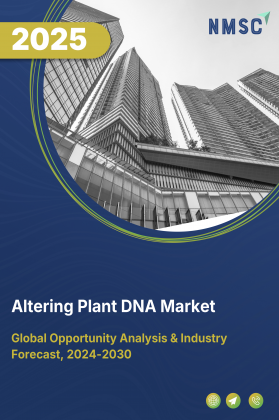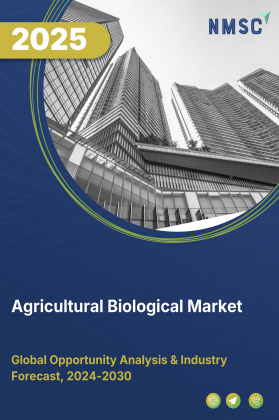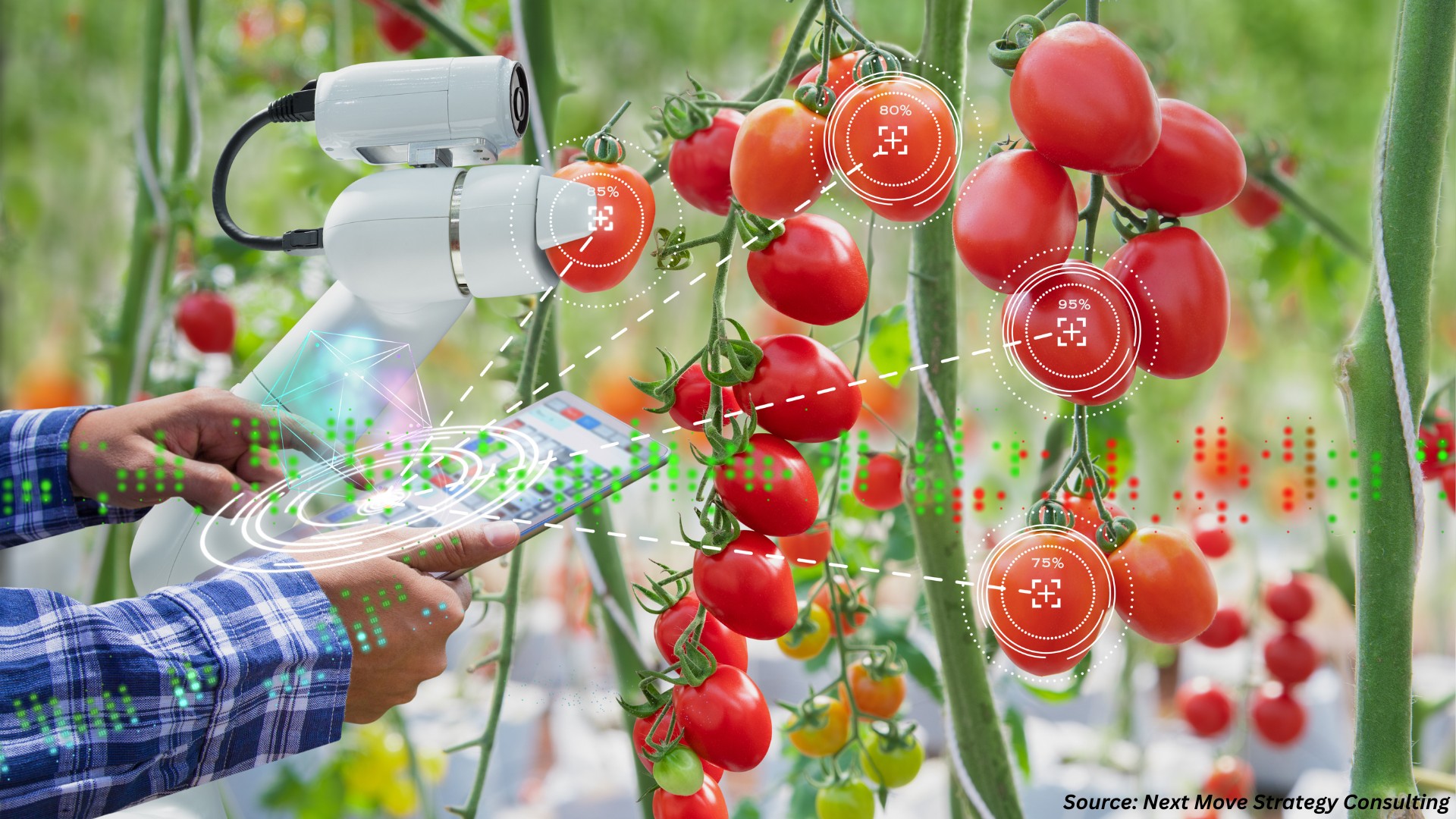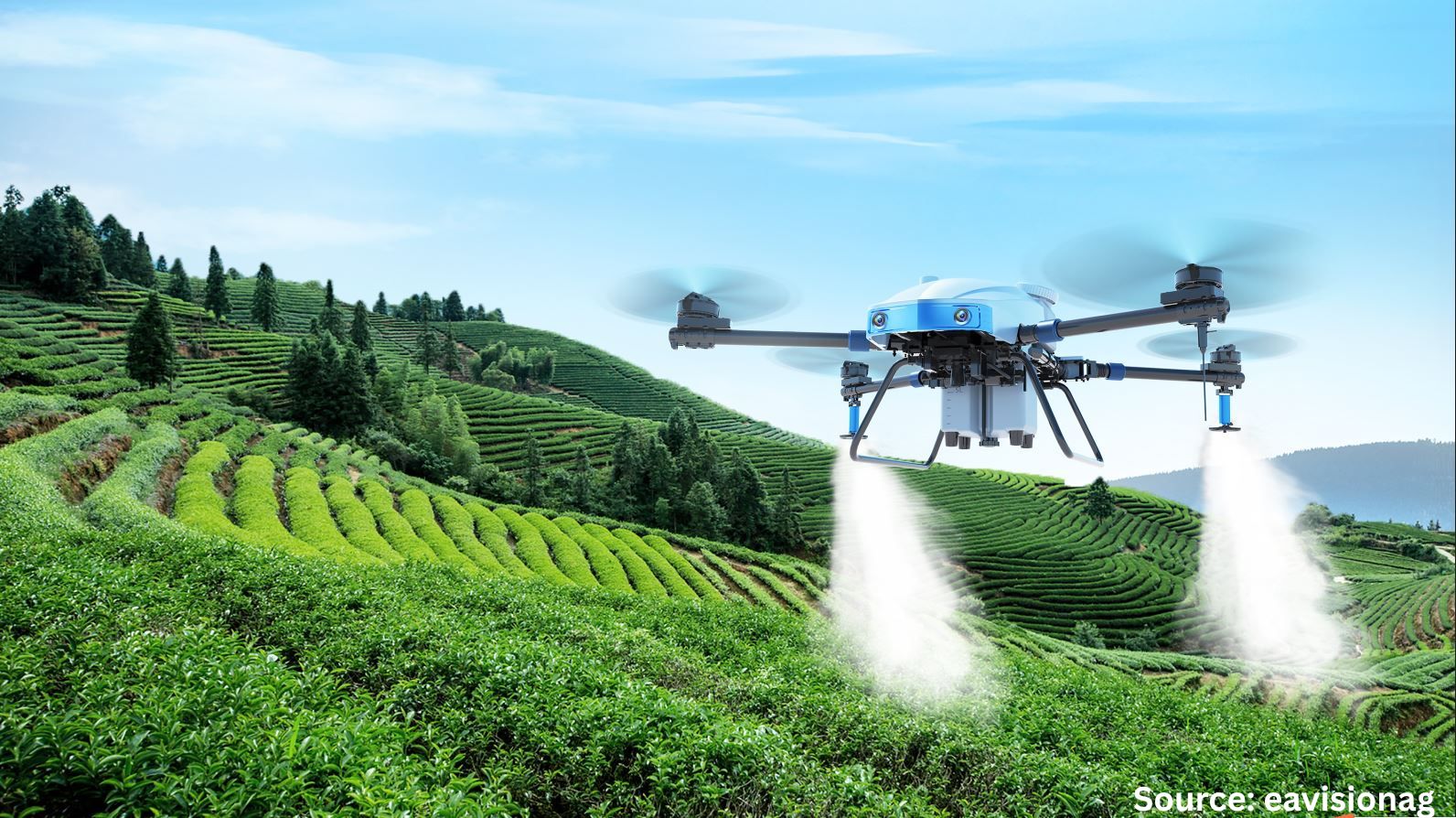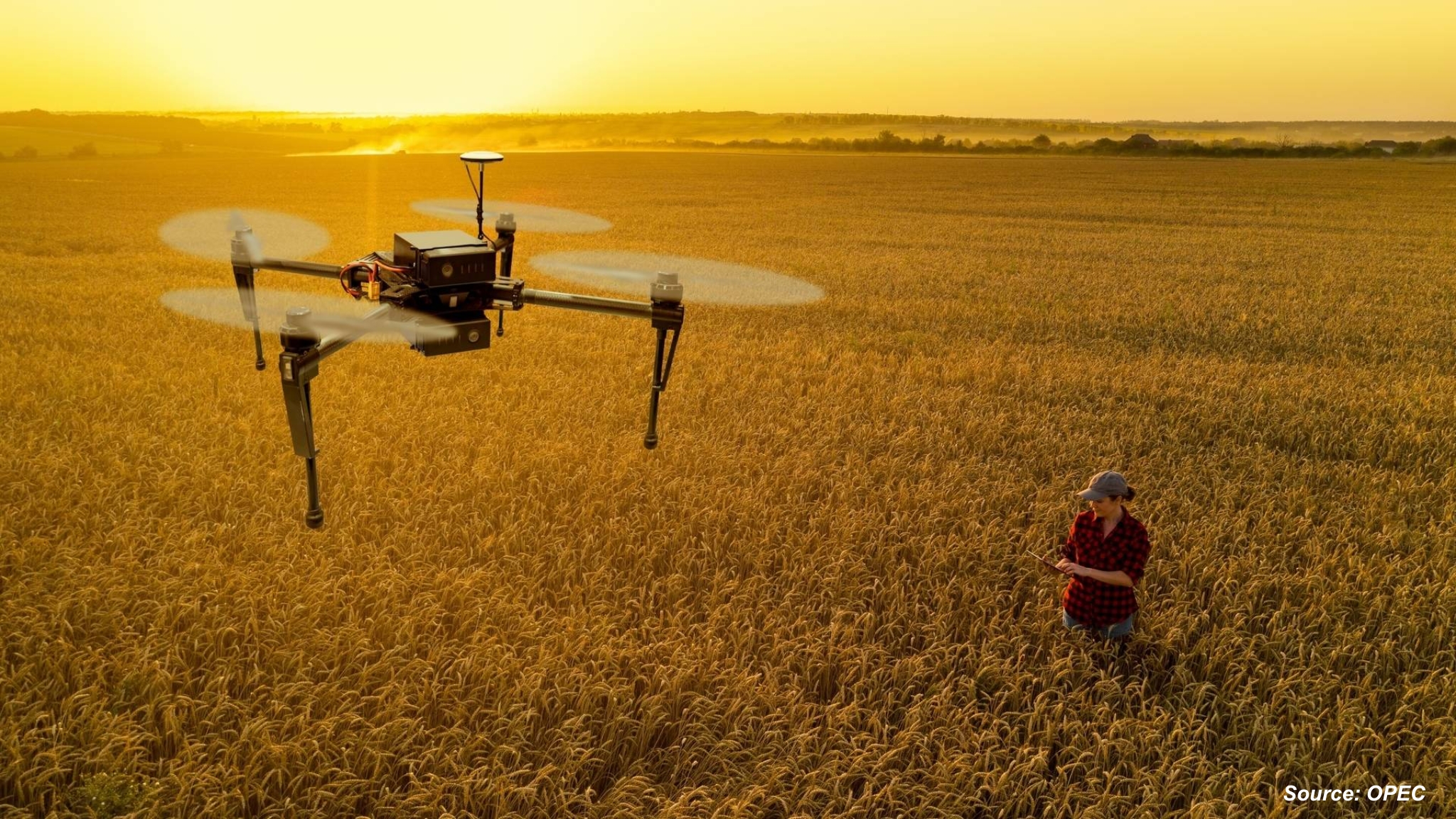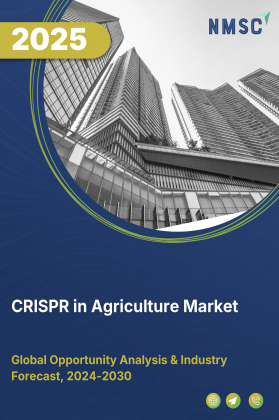
CRISPR in Agriculture Market by Offering (Tools and Consumables, Instruments and Hardware, and Others), by CRISPR System Type (CRISPR Cas9, and Others), by Editing Modality (Gene Knockout, Base Editing, and Others), by Delivery Method (Agrobacterium Mediated, and others), by Crop Type (Row Crops, and Others), by Application (Crop Applications, and others), by End User (Academic and Government Research Institutes, and Others) – Global Opportunity Analysis and Industry Forecast, 2025 – 2030.
Industry Overview
The global CRISPR in Agriculture Market size is estimated at USD 1.12 billion in 2024 and is expected to be valued at USD 1.34 billion by the end of 2025. The industry is projected to grow, reaching USD 3.26 billion by 2030, with a CAGR of 19.4% between 2025 and 2030.
Factors such as growing investment to tackle climate change, along with the rising global food demand and expansion of the agricultural industry, are accelerating the growth of the market. However, ethical concerns related to the use of CRISPR technology restrain the growth of this market.
On the contrary, with the incorporation of precision agriculture, the market opens opportunities for future expansion. Moreover, top leaders such as Pairwise, Inari, and others are adopting various strategies, including partnership to enable the development of crops with improved traits such as higher yield, resistance to pests and diseases, drought tolerance, and enhanced nutritional content.
Increasing Investment to Address Climate Change Fosters Market Growth
The growing emphasis on investment to tackle climate change drives the CRISPR in agriculture market demand by creating a demand for genetically modified crops capable of adapting to harsh environmental conditions. In 2024–2025, rising investments to combat climate change are significantly propelling the market. Funding for agri-gene-editing startups surged 206% in H1 2024, reaching $161 million, driven by the urgent need for climate-resilient crops. This enables precise genetic modifications to enhance crop tolerance and improve yield in changing environmental conditions, accelerating its adoption.
Rising Global Food Demand Emerges as a Key Market Trend
The rising global food demand significantly influences the growth of CRISPR in the agriculture industry by creating an urgent need for advanced technologies that enhance agricultural productivity and efficiency. As per the latest report of the World Bank, the global population is expected to reach 10 billion by 2050, requiring a 60% increase in food production.
Additionally, 150 Nobel and World Food Prize laureates recently called for a moonshot in agri-innovation, highlighting gene editing as essential to scale yields sustainably by mid-century. These trends underscore how escalating food needs are intensifying investment in CRISPR tools to rapidly produce disease and stress-resistant crops
AI-Driven Precision Breeding Accelerates CRISPR-Based Crop Adaptation and Agricultural Innovation
The integration of AI and CRISPR is revolutionizing precision breeding by enabling the rapid development of climate-resilient crops. AI-powered platforms are increasingly being used to analyze complex genomic data, predict gene functions, and identify optimal CRISPR targets.
In 2025, AI-powered platforms are being used to predict complex gene functions like heat-tolerant RNA molecules and guide CRISPR edits for stress resilience and yield enhancement across agriculture and biotech. This synergy allows for more accurate and efficient genetic modifications, enhancing crop traits like stress tolerance, yield, and adaptability to changing environments.
Across the agriculture and biotechnology sectors, this technological advancement is accelerating innovation, reducing development timelines, and supporting the global push for sustainable, high-performance food systems in the face of climate challenges.
Inefficient Delivery and Off-Target Effects Remain Key Technical Challenge
The efficient delivery of CRISPR components into plant cells remains a major technical barrier, particularly for complex traits. Current delivery methods often lack precision, limiting gene-editing accuracy and overall effectiveness. This challenge hampers the scalability of CRISPR applications in agriculture.
Additionally, concerns over off-target gene edits continue to pose safety and ecological risks, prompting stringent regulatory scrutiny. These uncertainties slow down product approvals and extend commercialization timelines. As a result, both the technical and regulatory landscapes present significant obstacles that must be addressed to fully unlock CRISPR’s potential in crop development and sustainable agriculture.
AI and Big Data in Precision Gene Editing Fuel Next-Gen CRISPR Innovation
By mid-2025, the integration of artificial intelligence, big data, and biotechnology, known as Breeding 4.0, is transforming CRISPR development. Platforms leveraging high throughput phenotyping (via drones, satellite remote sensing), multi omics datasets, and predictive modeling are enabling precise, multi trait genome edits in major crops like maize, soybean, and wheat.
A recent report notes that these technologies improve efficiency in breeding programs by automating phenotypic data collection and guiding CRISPR target selection through AI-driven genomic analysis. This shift is setting a new standard for precision and scale in sustainable crop improvement.
Market Segmentations and Scope of the Study
The CRISPR in agriculture market report is segmented on the basis of component type, product type, technique, delivery method, application, end-users, and region. On the basis of component type, the market is segmented into products and services. On the basis of product type, the market is divided into seeds and seedlings, biopesticides and bio-fungicides, and others. On the basis of technique, the market is segmented into CRISPR-Cas9, CRISPR-Cas12, CRISPR-Cas13, and others. On the basis of delivery method, the market is divided into protoplast delivery, viral vectors, and others. Based on application, the market is divided into crop improvement, livestock applications, and others. On the basis of end-users, the market is classified into academic & research institutes, biotechnology & seed companies, and others. The regional breakdown includes regions such as North America, Europe, Asia-Pacific, and the rest of the world (RoW).
Geographical Analysis
North America dominates the CRISPR in agriculture market share and is expected to continue its dominance during the forecast period. This is bolstered by supportive government policy, substantial private R&D investments, and leadership from firms like Pairwise and Corteva, as well as the region's growing need to address the challenges posed by drastic climate change, including extreme weather conditions and temperature fluctuations.
CRISPR technology provides an effective solution to enhance crop resilience, improve yields, and ensure food security, making it a key tool for farmers to adapt to changing environmental conditions. In June 2025, the contiguous U.S. experienced an average anomaly of +2.8 °F (about 1.6 °C) above the 20th-century mean, making it the seventh-warmest June on record. This extreme heat affects crop growth, which propels providers to develop solutions to maintain productivity.
Moreover, the agriculture sector growth in this region fuels the CRISPR in the agriculture industry as it creates a greater need for sustainable practices, improved crop yields, and enhanced resilience to climate change, pests, and diseases. This adoption of CRISPR supports the country’s efforts to enhance food security and boost the overall growth of the agricultural industry, thereby propelling the market.
Europe is showing cautious yet growing interest in CRISPR, as regulators reconsider GMO frameworks to enable gene-edited crops. Syngenta’s 2024 open-access initiative for CRISPR Cas12a tools aims to help European academic breeders explore precise genome editing without introducing foreign DNA. This reflects a broader EU trend toward enabling innovation within biodiversity and sustainability goals, positioning Europe for moderate CAGR improvement.
On the other hand, Asia-Pacific is projected to witness the fastest CAGR in the market, driven by a combination of regulatory reforms, food security concerns, and strategic investments. Countries like India, China, and Japan have adopted product-based regulations that exempt certain CRISPR-edited crops from GMO restrictions, significantly accelerating commercialization.
With over 60% of the global population and increasing climate pressures, the region is prioritizing high-yield, stress-resilient crops. Government-backed innovation hubs, such as China’s Five-Year Plan and Australia’s CSIRO programs, are fueling R&D in gene editing.
Additionally, public-private partnerships targeting smallholder farmers, such as flood-tolerant rice in Southeast Asia are promoting scalable adoption. Strategic collaborations, like the Illumina–LGC Biosearch partnership, further strengthen the regional ecosystem. Together, these factors make Asia-Pacific the most dynamic growth hub for CRISPR-enabled agriculture.
Also, regions including Latin America, Africa, and the Middle East are emerging CRISPR markets, bolstered by public-private collaborations focused on food security. For instance, in Sub-Saharan Africa, CRISPR adoption is driven by capacity-building and regulatory advancements.
For instance, the International Institute of Tropical Agriculture (IITA), UC Davis, IGI, and AOCC launched an intensive African Plant Breeding Academy CRISPR course in Nairobi, training 80–100 scientists over five years to develop climate-resilient, nutritionally enhanced crops. Together, these efforts are building foundational ecosystems in emerging markets, pointing to steady CRISPR adoption even in regions currently trailing North America and APAC
Strategic Analysis Adopted by Key Players
Various market players operating in the CRISPR in agriculture industry are Corteva Agriscience, Bayer AG, Syngenta Group, BASF SE, Pairwise Plants LLC, Inari Agriculture Inc, Cibus Inc, Benson Hill Inc, KWS SAAT SE Co KGaA, Limagrain (Groupe Limagrain), Tropic Biosciences Ltd, KeyGene N V, Synthego Corporation, AgBiome Inc, Hudson River Biotechnology B V, and others. These market players continue to adopt various strategies, such as partnership and business expansion to maintain their dominance in the market.
-
In September 2024, Corteva AgriscienceCorteva announced a $25 million equity investment in Pairwise and entered into a joint venture with Pairwise to accelerate gene editing solutions for climate-resilient crops.Corteva announced a $25 million equity investment in Pairwise and entered into a joint venture with Pairwise to accelerate gene editing solutions for climate-resilient crops.
-
In July 2024, Bayer AG launched a next-generation gene editing R&D facility in St. Louis, Missouri, featuring automated CRISPR capabilities.Bayer more broadly invests in “open innovation” in genome editing for fruits and vegetables.
-
In June 2024, Syngenta Group, yngenta’s Shoots platform opened access to its CRISPR-Cas12a and breeding technologies for academic institutions worldwide, aiming to boost innovation in smallholder and sustainability-focused crops.Syngenta continues leveraging CRISPR and other gene editing tools to remain competitive in advanced breeding and trait development.
-
In September 2024, Pairwise Plants LLC began a joint venture with Corteva to accelerate gene edits in staple and specialty crops. Pairwise continues expanding its platform, licensing activity, and trait development pipeline (e.g. pitless cherries, seedless fruit).
-
In September 2025, KWS SAAT SE & Co. KGaA, KWS publicly noted that it is applying CRISPR in development of mildew-resistant barley and sugar beet cultivars with lower water usage, and announced a non-browning, CRISPR-edited lettuce variety in the U.S.
Key Benefits
-
The report provides quantitative analysis and estimations of the market from 2025 to 2030, which assists in identifying the prevailing industry opportunities.
-
The study comprises a deep dive analysis of the current and future CRISPR in agriculture market trends to depict prevalent investment pockets in the sector.
-
Information related to key drivers, restraints, and opportunities and their impact on the market is provided in the report.
-
Competitive analysis of the players, along with their market share, is provided in the report.
-
SWOT analysis and Porter's Five Forces model are elaborated in the study.
-
Value chain analysis in the market study provides a clear picture of the roles of stakeholders
CRISPR in Agriculture Market Key Segments
By Offering
-
Tools and Consumables
-
Enzymes and Nucleases
-
Guide RNA and Libraries
-
Editing Kits and Reagents
-
Delivery System Consumables
-
-
Instruments and Hardware
-
Delivery Instruments
-
Automated Editing Workstations
-
Analytical and QC Equipment
-
-
Software and Platforms
-
Bioinformatics Platform Subscriptions
-
SaaS and Data Management Tools
-
-
Services
-
Contract Research and Workflow Services
-
Guide RNA and Vector Design
-
Field Trial and Phenotyping Services
-
Regulatory Consulting and Dossier Preparation
-
-
Licensing and Intellectual Property
-
Technology Licensing Fees
-
Trait Royalties
-
-
Commercial Edited Products
-
Edited Seeds and Planting Material
-
Edited Animal Germplasm
-
Edited Microbial Inoculants
-
By CRISPR System Type
-
CRISPR Cas9
-
CRISPR Cas12
-
CRISPR Cas13
-
Other Nucleases
By Editing Modality
-
Gene Knockout
-
Base Editing
-
Prime Editing
-
Gene Insertion and Activation
By Delivery Method
-
Agrobacterium Mediated
-
Biolistic Delivery
-
Ribonucleoprotein Delivery
-
Viral Vectors
By Crop Type
-
Row Crops
-
Corn
-
Soybean
-
Wheat
-
Canola
-
Cotton
-
-
Fruits and Vegetables
-
Specialty Crops
By Application
-
Crop Applications
-
Yield and Biomass Improvement
-
Abiotic Stress Tolerance
-
Disease Resistance
-
Herbicide Tolerance
-
Quality and Nutritional Enhancement
-
Shelf Life and Post Harvest Traits
-
-
Livestock Applications
-
Disease Resistance
-
Productivity Enhancement
-
Reproductive Traits
-
Welfare Traits
-
-
Industrial Applications
By End User
-
Academic and Government Research Institutes
-
Biotechnology and Seed Companies
-
Livestock Producers
-
Commercial Growers and Farmers
By Region
-
North America
-
The U.S.
-
Canada
-
Mexico
-
-
Europe
-
The UK
-
Germany
-
France
-
Italy
-
Spain
-
Denmark
-
Netherlands
-
Finland
-
Sweden
-
Norway
-
Russia
-
Rest of Europe
-
-
Asia-Pacific
-
China
-
Japan
-
India
-
South Korea
-
Australia
-
Indonesia
-
Singapore
-
Taiwan
-
Thailand
-
Rest of Asia-Pacific
-
-
RoW
-
Latin America
-
Middle East
-
Africa
-
Key players
-
Corteva Agriscience
-
Bayer AG
-
Syngenta Group
-
BASF SE
-
Pairwise Plants LLC
-
Inari Agriculture Inc
-
Cibus Inc
-
Benson Hill Inc
-
KWS SAAT SE Co KGaA
-
Limagrain (Groupe Limagrain)
-
Tropic Biosciences Ltd
-
KeyGene N V
-
Synthego Corporation
-
AgBiome Inc
-
Hudson River Biotechnology B V
REPORT SCOPE AND SEGMENTATION:
|
Parameters |
Details |
|
Market Size in 2025 |
USD 1.34 Billion |
|
Revenue Forecast in 2030 |
USD 3.26 Billion |
|
Growth Rate |
CAGR of 19.4% from 2025 to 2030 |
|
Analysis Period |
2024–2030 |
|
Base Year Considered |
2024 |
|
Forecast Period |
2025–2030 |
|
Market Size Estimation |
Billion (USD) |
|
Growth Factors |
|
|
Countries Covered |
28 |
|
Companies Profiled |
15 |
|
Market Share |
Available for 10 companies |
|
Customization Scope |
Free customization (equivalent to up to 80 working hours of analysts) after purchase. Addition or alteration to country, regional, and segment scope. |
|
Pricing and Purchase Options |
Avail customized purchase options to meet your exact research needs. |

















 Speak to Our Analyst
Speak to Our Analyst



